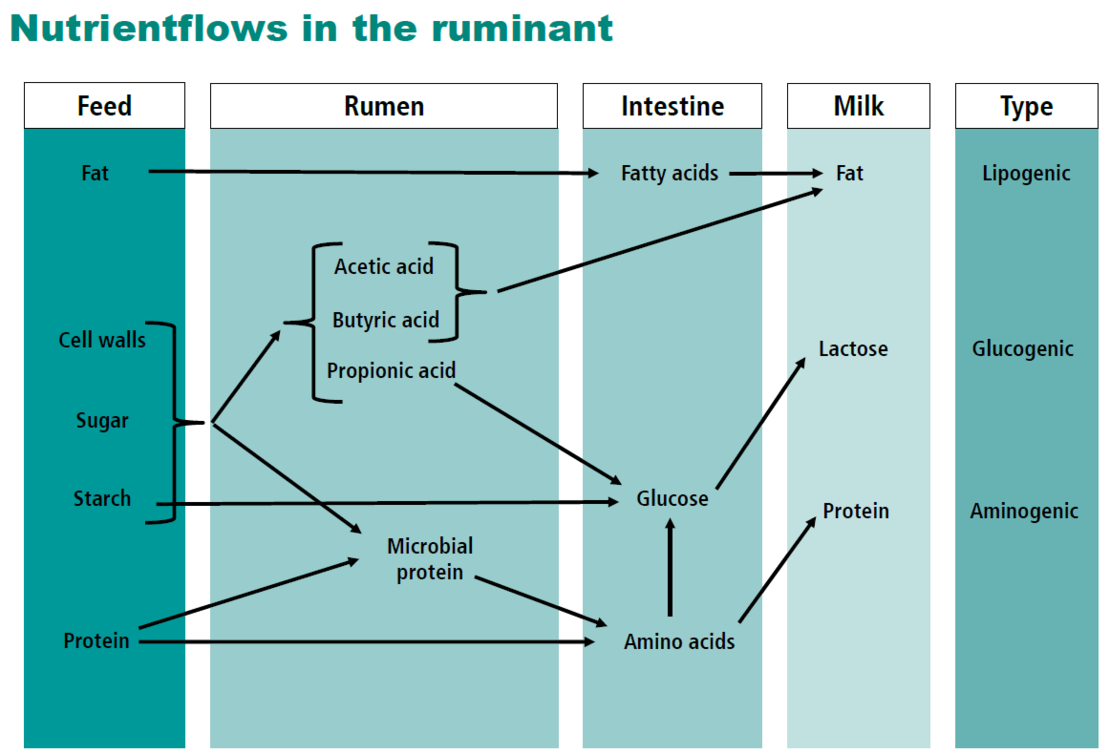“It is important to know what happens with all different nutrients in the ruminant before it will be milk”, says Van Straalen.
A feed can be divided into cell walls, sugars, starch, proteins and fats. Within the energy metabolism of the ruminant 3 energy sources are distinguished; Glycogenic which has effect on lactose and milk liters production, lipogenic which has effect on milk fat content and aminogenic for milk protein content.
Following the feed components will give us more information about the nutrient flows and the effect on the production of the animal.
To start with fats in the feed. Fats will bypass the rumen and are digested and taken up in the intestine. The released lipogenic energy has effect on the fat content of the milk.
“Keep in mind the rumen pH level and rumen acidosis when feeding a lot of rumen undegradable starch”.
Most interesting and important for the ruminant is the breakdown and fermentation of plant cell walls and plant ingredients. When the rumen is working well, about 70% of the required energy and protein for the cow is be produced in the rumen.
During the breakdown of the cell walls in the rumen volatile fatty acids are released (acetic-, butyric- and propionic acids). The first two have an effect on the milk fat content (lipogenic). “Higher milk fat contents in practice can be seen when you feed older grass or hay”.
When more propionic acid is released, more glucose will be available which is the driving force for milk production. Like mentioned above, starch is the most known source for glycogenic nutrients. “However increasing the amount of (rapid) fermentable cell walls also results in more glycogenic energy so more milk”.
Better digestible cell walls improve the available energy at rumen level. “More energy at rumen level results in more microbial protein and together with the extra glucose it results in a higher milk production”.
A higher cell wall digestibility also has an effect on nitrogen efficiency which is especially trending in The Netherlands at the moment.
If insufficient glycogenic energy is available a ruminant will use proteins as energy source. The amino acids will be converted into glucose. Especially in early lactation during the negative energy balance of the cow this is quite common. Concerning nitrogen and protein usage and efficiency this is not desirable at all. Protein is the most expensive feed ingredient, so stop throwing your money out of the window.
Since many years one of the breeding goals of DSV is to improve the digestibility of forages and cell wall digestibility in particular. DSV helps you to improve the value of your grass. DSV best varieties concerning forage quality are listed as Milk Index varieties.
